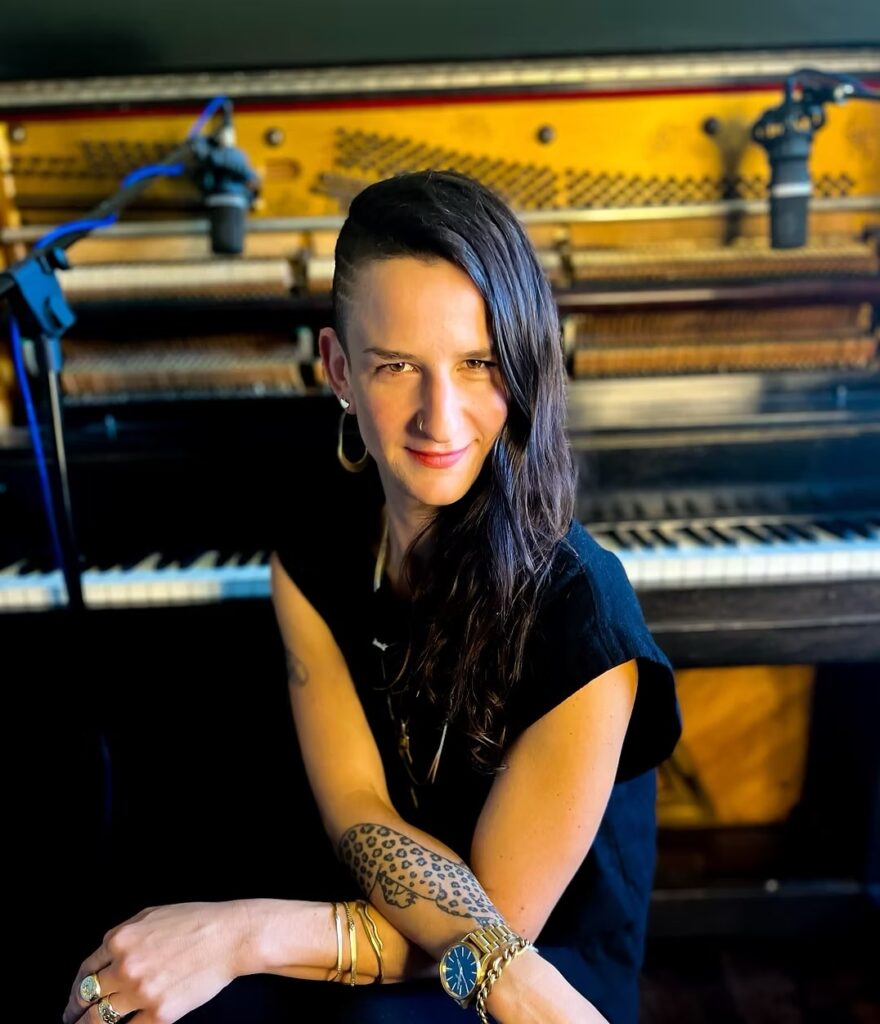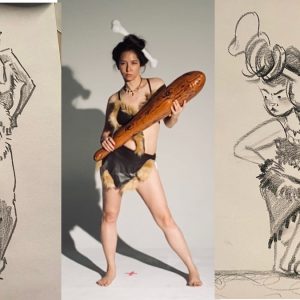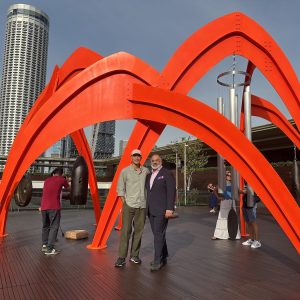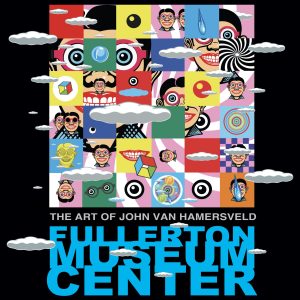Composer Hil Jaeger (Music BFA 15) said creating the new sound logo and brand anthem for Cirque du Soleil was a “dream commercial project.” Jaeger’s sound design builds on the circus’s “Alegría” theme, working as both homage and something all its own.
“This the North Star of all of their music going forward. So they’ll show this music to composers they work with for years to come and say, ‘This is our sound,'” she said proudly.
Last year, she created the cartoon-like seven-second intro for streaming platform Tubi. “Each of [these sound logos] has a very structured musical form with an intro and a build and an ending,” she said. “It’s like writing a compositional haiku. It’s extremely challenging because you have seconds to hit each of those emotional moments, but also incredibly rewarding, because when it works, it’s there, and it just hits you in the face.”
She spent a year on the two-minute anthem, bringing in “a lot of orchestration and vocals and also using synths and electronics” for a sound that wouldn’t become dated too quickly. “They kept encouraging me to use more of my voice and go more avant-garde,” said the composer, whose own humming became an integral part of the piece. Sometimes, Jaeger, whose score for the podcast Spark & Fire was nominated in 2023 for an Ambie award, is approached directly for a project but revamping the Cirque du Soleil signature sound meant pitching against other composers.
“It was very much shrouded in secrecy,” Jaeger said of the Cirque du Soleil pitch meeting, in which she was the only woman who had been invited. The process began with each composer presenting their interpretation of a 15-second piece of music. “Usually, they choose two composers to go forward with, and then you pitch again, and then they narrow it down, but it came back, and they had chosen three to move forward with, and they were all mine. It was exciting,” she said.
Jaeger worked with Paul Amitai, the executive strategy director at Listen, a boutique sound design studio agency that was recently acquired by Premier. She compared him to iconic “Mad Men” pitchman Don Draper, explaining that he can spend as much as a year gathering input from the company before he reaches out to a composer. Many times, the executives “have absolutely no musical background,” explained Jaeger, who said that Amitai will use the laymen’s feedback to hone in on certain timbres and instruments that resonate with them.
Before focusing on the technological side of music, Jaeger was a “very, very serious” classical pianist in high school, whose chamber quartet played at Lincoln Center and was also learning to play the guitar. A composer who was working with her father, a television producer, proved to be a pivotal mentor.
“He heard me playing music, and he took me to a music store and made me sing in every microphone, and picked out the right microphone,” share recalled. He also gave her a copy of the expensive music creation software Cubase. “Suddenly, the world of being a producer opened up. It wasn’t just me and the guitar anymore. I could add strings. I could add percussion, I could build all these big, huge pieces.”
Although Jaeger was used to performing with a band, when she got an artist visa to move to Berlin, she had to figure out how to perform “entirely by myself.”
She explained that she applied to CalArts because they had the only music technology program in the country at the time and she not only wanted to hone her live performance but learn how to mix and master to highlight specific instruments.
“How do I make that guitar sound good? How can those drums pop out and hit you in the face? How can that cello just sound so big and low and deep and resonant? I sat there for four years studying [equalization] EQ and compression and figuring out what those tools do,” she explained.
She lamented, however, being the only woman in her music technology program at CalArts in the early 2010s. “It was a time when there were no women professors, and when I got there, there were two women in the whole program, and they had graduated, so it was just me.”
“Women are still so sadly underrepresented in the industry,” she added. She urged other women composers, “Go to CalArts and learn the tech, learn the technology. Because we need you. We need more creative women fluent in the technological side so their voices can be up there.”
Jaeger recently built her own music studio in the middle of the redwoods in California’s Marin County. “I used the skills I learned at CalArts, acoustically, building a space that’s powerful. What I’ve taken from my music technology program is I am not only am I composing and performing, but I am recording everything. I am mixing everything and, oftentimes, I’m mastering everything. That’s a huge strength and selling point, and it also allows me to maintain creative control all across the board.”



